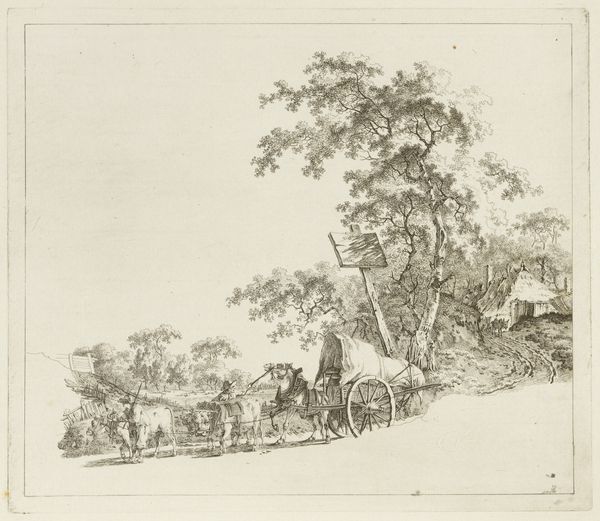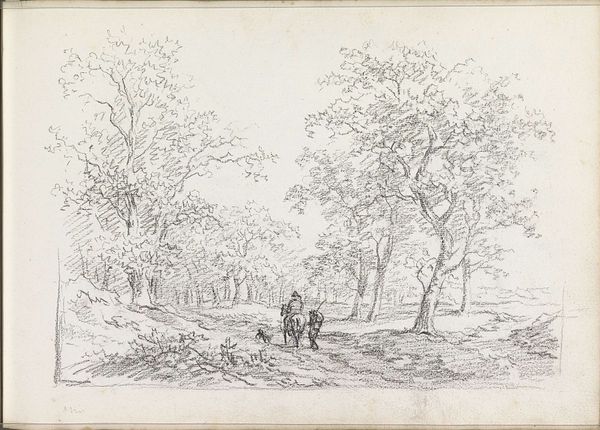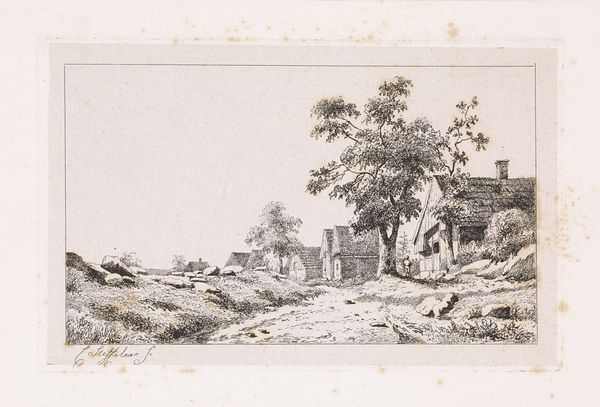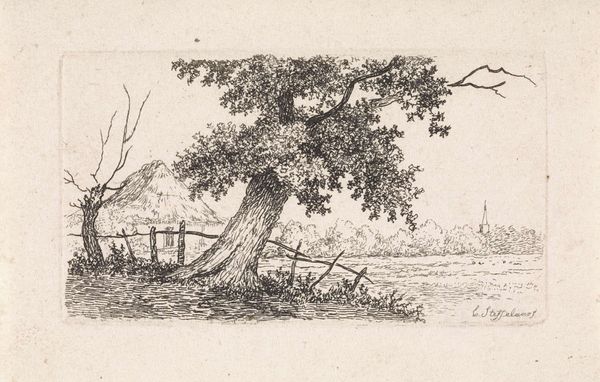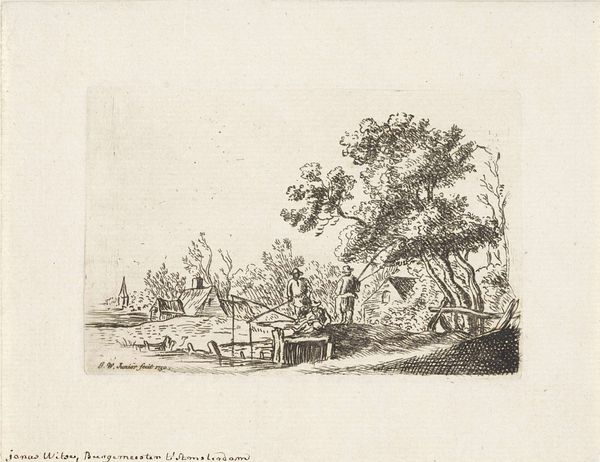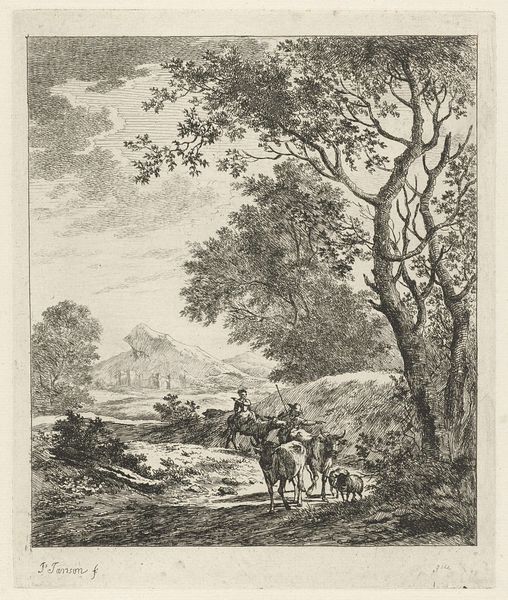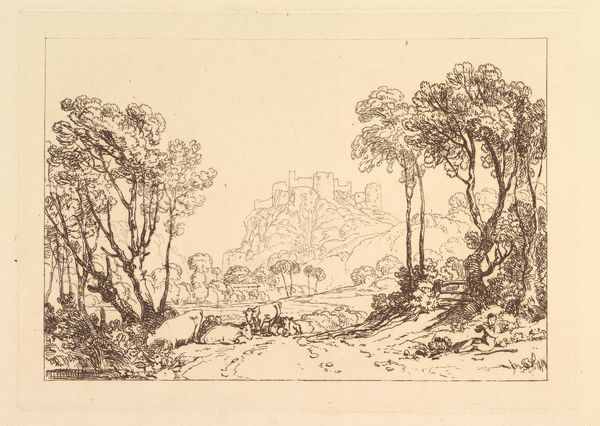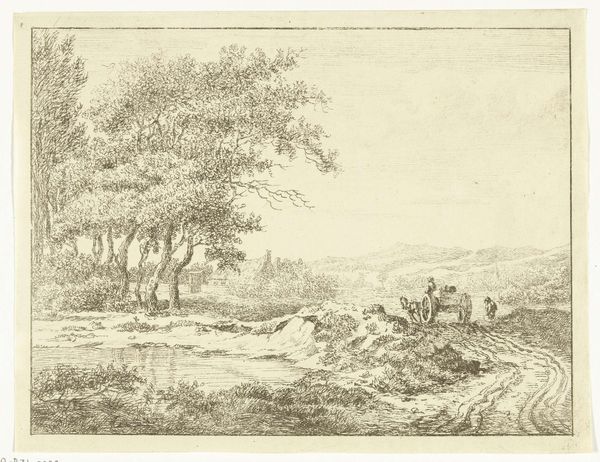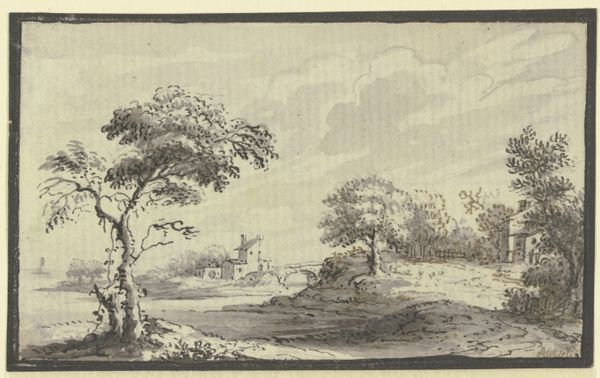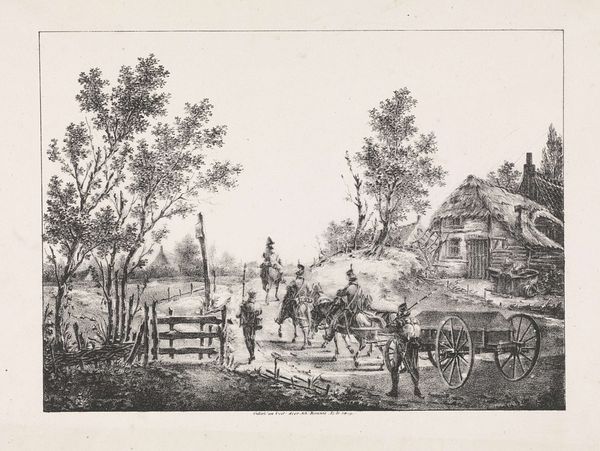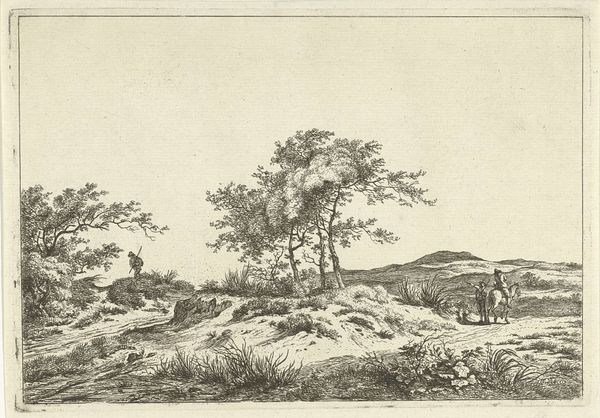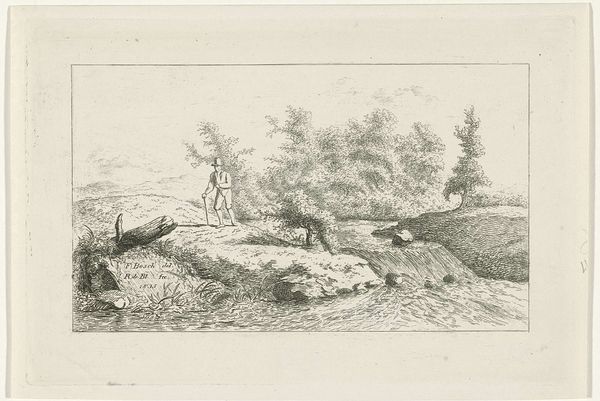
drawing, pencil
#
pencil drawn
#
drawing
#
pen sketch
#
pencil sketch
#
landscape
#
figuration
#
pencil drawing
#
romanticism
#
pen-ink sketch
#
pencil
#
line
#
genre-painting
Dimensions: height 293 mm, width mm
Copyright: Rijks Museum: Open Domain
Curator: What a captivating drawing! We're looking at "Man in hondenkar" attributed to Joannes Bemme, dating roughly from 1809 to 1841. It's currently held at the Rijksmuseum, rendered skillfully in pencil. Editor: The immediacy of the scene strikes me—that texture achieved with fine pencil lines. And a man, casually lounging in his dog-pulled cart... it has a touch of pastoral humor, doesn't it? The way he sits there eating! Curator: Absolutely. It encapsulates a charming genre scene, deeply rooted in the romanticism of its era. Consider the symbolism: the working dogs, emblems of loyalty and humble labor, pulling a cart for a man who seems almost leisurely. Is he a landowner perhaps? What story are we to glean from his interaction with nature? Editor: From a compositional perspective, the artist’s use of hatching and cross-hatching truly captures depth. Look at how the light catches on the tree’s bark and then consider how it all draws your eye across the diagonal plane and finally toward the hazy background, to that structure back there… is that a mill? Curator: That subtle gradation into the distance speaks volumes! Beyond being mere illustration, there is definitely a societal commentary here, subtly critiquing social hierarchies. The dogs are yoked together, but this does offer freedom or burden? There's also a very close correlation of the work of this artwork to some Dutch prints which at this time would portray farmers in comical ways. Editor: True. It begs the question whether this work also shares in that tradition. But look, too, at the detail he’s given to each individual figure, each element: from the dogs’ harnesses to the foliage by the roadside and the man's hat. They are brought together through careful use of the line which allows our eyes to move and linger, connecting us through visual echoes of each part to the whole. Curator: Precisely, it offers insight into 19th-century rural life. By focusing our gaze, we reflect on a social past made clear to us through line and gesture. I find myself moved by how visual language can shape understanding over such a long time. Editor: I'm left admiring how the work uses relatively few formal devices to so deeply stir a whole historical landscape to life. An economy of design with such resounding conceptual breadth makes this truly great!
Comments
No comments
Be the first to comment and join the conversation on the ultimate creative platform.
